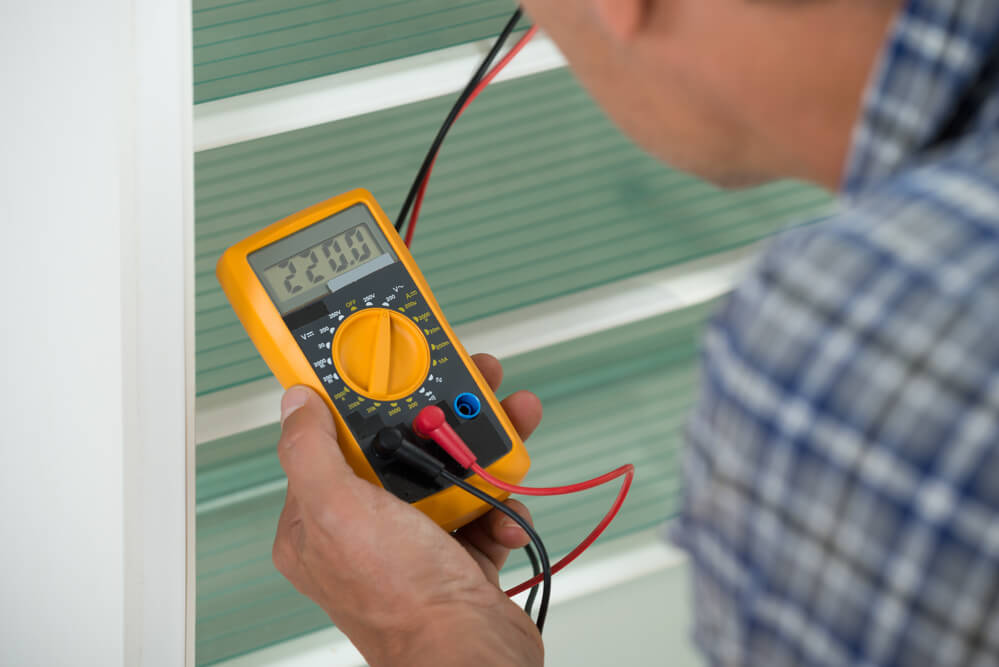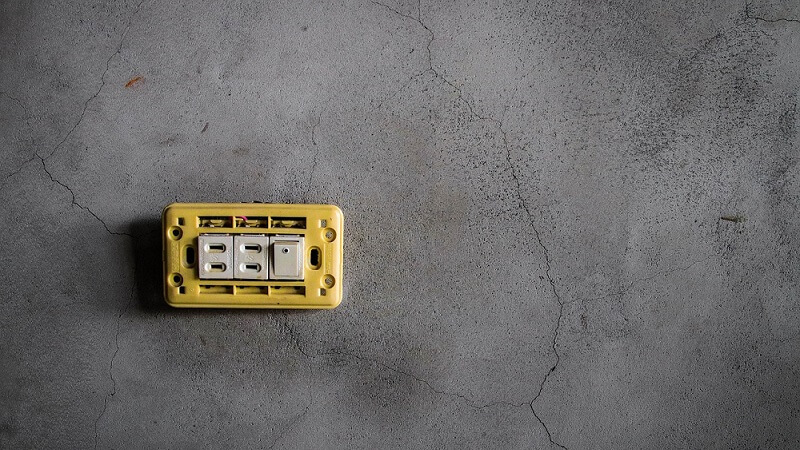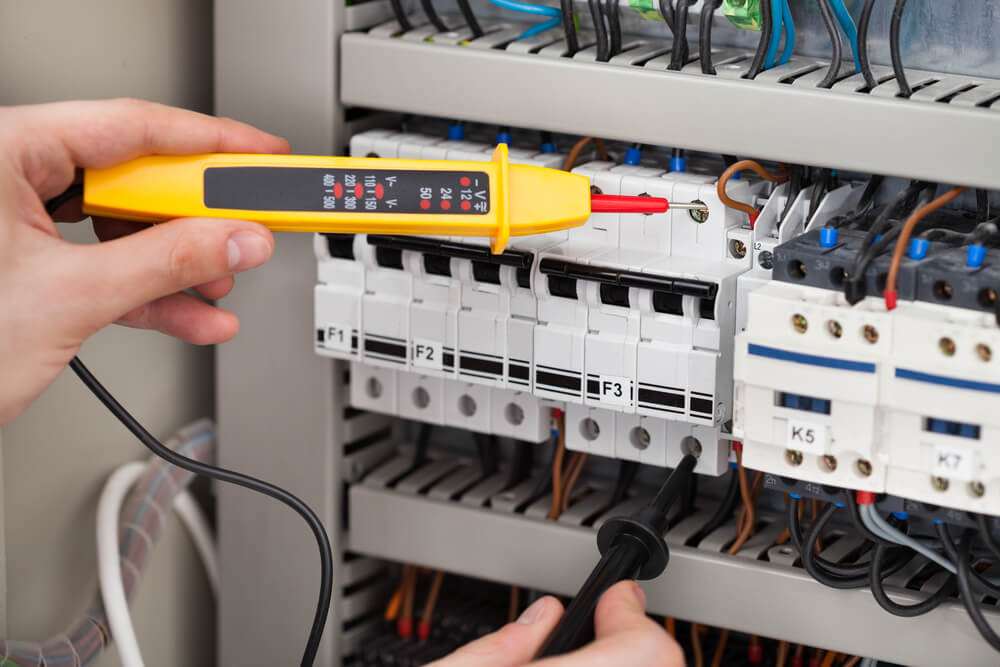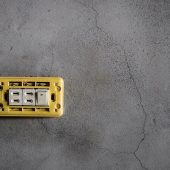It’s easy to check if a plug socket is live and working properly. The easiest and most accurate tool to use is a multimeter. It’ll tell you if there is power reaching the socket and the actual amount.
If you don’t have a multimeter on hand, you can also use a socket tester or a voltage tester.
Let’s start with a multimeter.
Read on to learn more on how to check if a plug socket is live.
How to use a multimeter to test a socket

The advantage of using a multimeter is that it tells you exactly what voltage the socket is putting out.
This not only tells you that the socket is live, it can also help you diagnose whether the socket is faulty (too little or too much voltage).
You can also use a multimeter to check whether the socket is wired properly.
- First set up the multimeter. Connect the red and black probes to the right holes. The black probe goes into the hole labelled as COM while the red probe goes into the volts/ohms hole.
- Set the multimeter dial to AC voltage, which is usually shown as a V with wavy line next to or on top of it.
- Select the lowest voltage on the multimeter that’s higher than the voltage of the socket. The standard voltage for UK sockets is 230V. On most multimeters, this is 600V. Some multimeters have an auto-ranging function, meaning you don’t need to select a range.
- Holding the multimeter leads in one hand to prevent current from flowing through your body, plug the black one into the neutral slot and the red one into the hot/live slot (note that it doesn’t matter which lead goes into which slot. You can plug the red one into neutral and black into live).
A quick note on identifying live, neutral and earth slots on a socket. In the UK, the live slot is on the right and the neutral slot is on the left. The earth slot is the hole at the top.
If you want to be double sure of the polarity, unscrew the socket cover and check the wires underneath. The brown wire connects to the live terminal, the blue one to the neutral terminal and the yellow & green wire to the earth terminal.
You can connect the multimeter leads directly to the exposed terminals.
- With the multimeter leads connected to the neutral and live slots or terminals, check the reading on the multimeter. If the socket is live, the reading will be 230V, although it can be slightly higher or lower.
- If the multimeter reads zero or close to zero, the socket is not live.
Note that the socket may be live but faulty. If the multimeter reading is much lower than 230V or much higher than that, there’s a problem with the socket.
To check if the wires in the socket are reversed, insert one of the multimeter leads into the earth slot (the slot at the top) and the other into the live slot (the slot on the right). You should get a reading of 230V or thereabouts.
If it reads zero or close to zero, put the lead in the left slot. If the multimeter shows a voltage of about 230V, it means the wires have been crossed. Left should always be neutral and should have little to no voltage difference with the earth slot, meaning the multimeter reading should be zero or close (max 2V).
Open the socket cover to confirm reverse connection.
Using a socket tester

A socket tester is a small portable instrument that plugs directly into the socket to be tested. Depending on the complexity of the tester, you can carry out a wide range of safety tests.
A basic socket tester meant for home use will tell you if a plug socket is live. Socket testers use LED lights to indicate the status of each terminal. If the lights don’t come on, then you know the socket is not live.
Other things you can test for include proper voltage, the presence of an earth wire, live-neutral or live-earth wire reversal and whether the socket is connected properly to the mains.
Using a voltage tester

If you just need to check if the socket is putting out power, use a voltage tester.
Some screw drivers used by electricians have a built-in voltage tester. Open the socket cover and touch the tip of the screw driver to the live terminal. The screw driver should light up if the socket is live.
You can also buy a dedicated voltage tester. Most are non-contact, which ensures safety.
With a non-contact voltage tester, you don’t need to open the socket. Just put the tip of the tester near or inside the live (right) slot. It should light up and produce a sound if the socket is live.



Hi Jack, thank you for your forum enthusiasm.
I have recently had a low plate reading on a socket in my house, but if I plug a socket tester in all 3 lights are on. Am I being mugged or does the sparky working for a letting agent know what he is doing. 😁
Regards Karl @steel fabs.